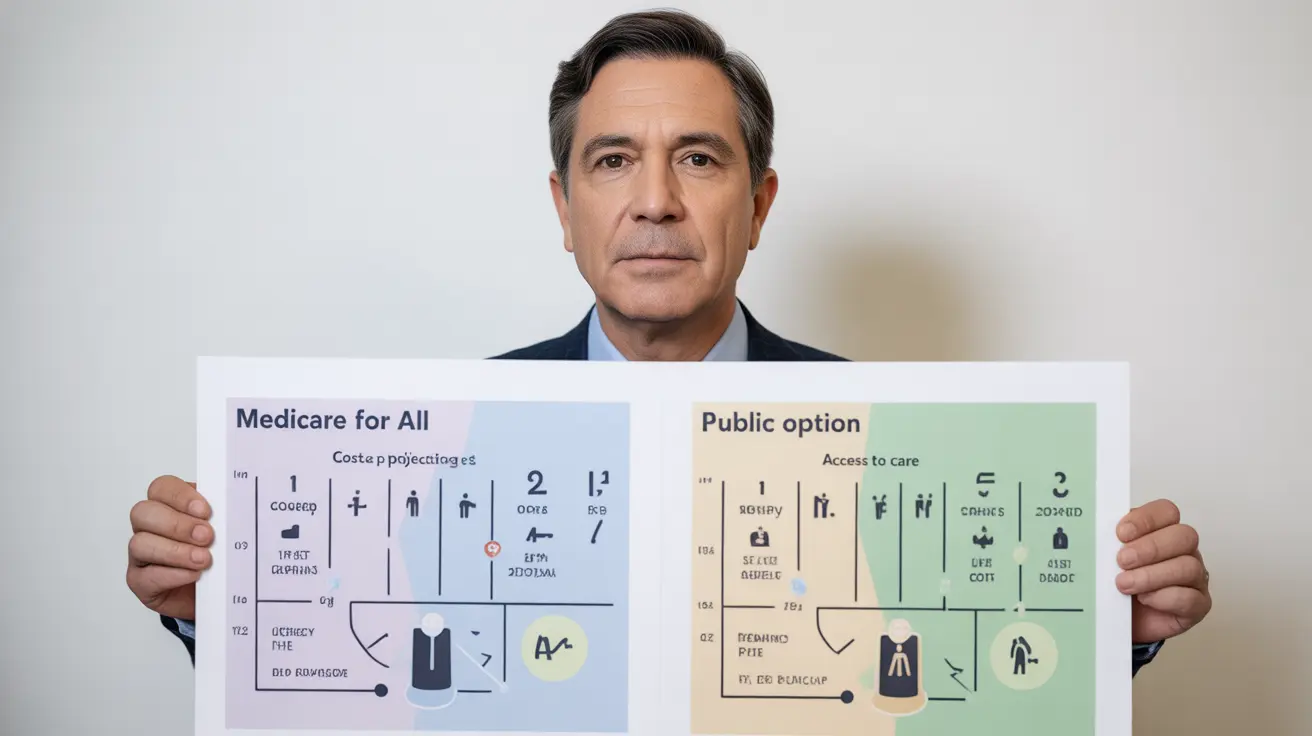As healthcare reform continues to be a critical topic in American politics, two major proposals have emerged as potential solutions to the nation's healthcare challenges: Medicare for All and the Public Option. Understanding the key differences between these approaches is essential for making informed decisions about the future of healthcare in the United States.
This comprehensive guide will explore how each system would work, their potential impacts on healthcare costs and access, and what these changes could mean for you and your family.
Understanding the Basics: Medicare for All vs Public Option
Medicare for All represents a single-payer healthcare system where the federal government would provide health insurance coverage to all Americans. This system would effectively replace private insurance companies, creating a universal healthcare program similar to those found in many other developed nations.
The Public Option, by contrast, would create a government-run health insurance plan that would compete alongside private insurance options in the marketplace. This approach aims to increase competition and provide an additional choice for consumers while maintaining the existing private insurance system.
Cost Implications and Funding Mechanisms
Medicare for All Costs
Under Medicare for All, healthcare would be funded through tax revenue, eliminating premiums, deductibles, and most out-of-pocket costs. While taxes would likely increase to fund the system, supporters argue that most Americans would save money overall by eliminating private insurance expenses.
Public Option Costs
The Public Option would maintain the current premium-based system, with the government plan offering potentially lower rates due to reduced administrative costs and greater negotiating power. Individuals would still pay premiums, but these might be more affordable than current private insurance options.
Impact on Private Insurance
The implementation of either system would significantly affect the current private insurance market. Medicare for All would largely eliminate private insurance for basic healthcare coverage, while the Public Option would preserve private insurance companies but introduce new competition into the market.
Healthcare Access and Provider Networks
Both proposals aim to expand healthcare access, but their approaches differ significantly. Medicare for All would provide universal coverage with a standardized network of providers, while the Public Option would add another choice to existing insurance networks, potentially expanding access through increased competition.
Key Advantages and Challenges
Medicare for All Benefits
- Universal coverage for all Americans
- Elimination of most out-of-pocket costs
- Simplified healthcare administration
- Standardized coverage across the country
Public Option Benefits
- Maintains consumer choice
- Creates market competition
- Potentially lower premiums
- Preserves existing employer-based coverage
Frequently Asked Questions
What is the main difference between Medicare for All and the Public Option when it comes to health insurance coverage in the U.S.?
The fundamental difference is that Medicare for All would create a single, government-run healthcare system covering all Americans, while the Public Option would add a government insurance plan to compete with private insurance options in the marketplace.
How would my healthcare costs change under Medicare for All compared to a Public Option plan?
Under Medicare for All, you would pay higher taxes but face no premiums, deductibles, or most out-of-pocket costs. With the Public Option, you would continue paying premiums, but they might be lower than current private insurance rates due to increased market competition.
Would I still be able to keep my private health insurance under Medicare for All or the Public Option?
Under Medicare for All, private insurance for basic healthcare coverage would largely be eliminated. With the Public Option, you could keep your existing private insurance or choose the government-run plan.
How might Medicare for All or a Public Option affect my access to doctors and healthcare services?
Medicare for All would provide universal access to participating healthcare providers nationwide. The Public Option would offer its own network of providers while maintaining existing private insurance networks.
What are the main advantages and disadvantages of choosing a Public Option instead of switching to Medicare for All?
The Public Option maintains consumer choice and market competition while potentially lowering costs through increased competition. However, it may not achieve universal coverage or eliminate healthcare inequities as comprehensively as Medicare for All would.




